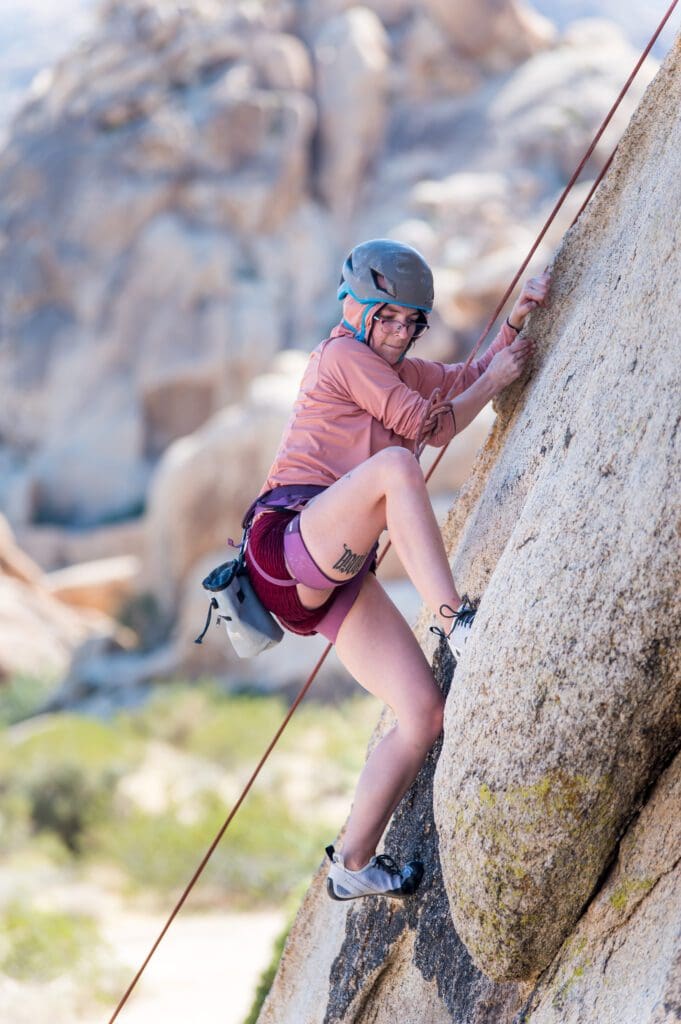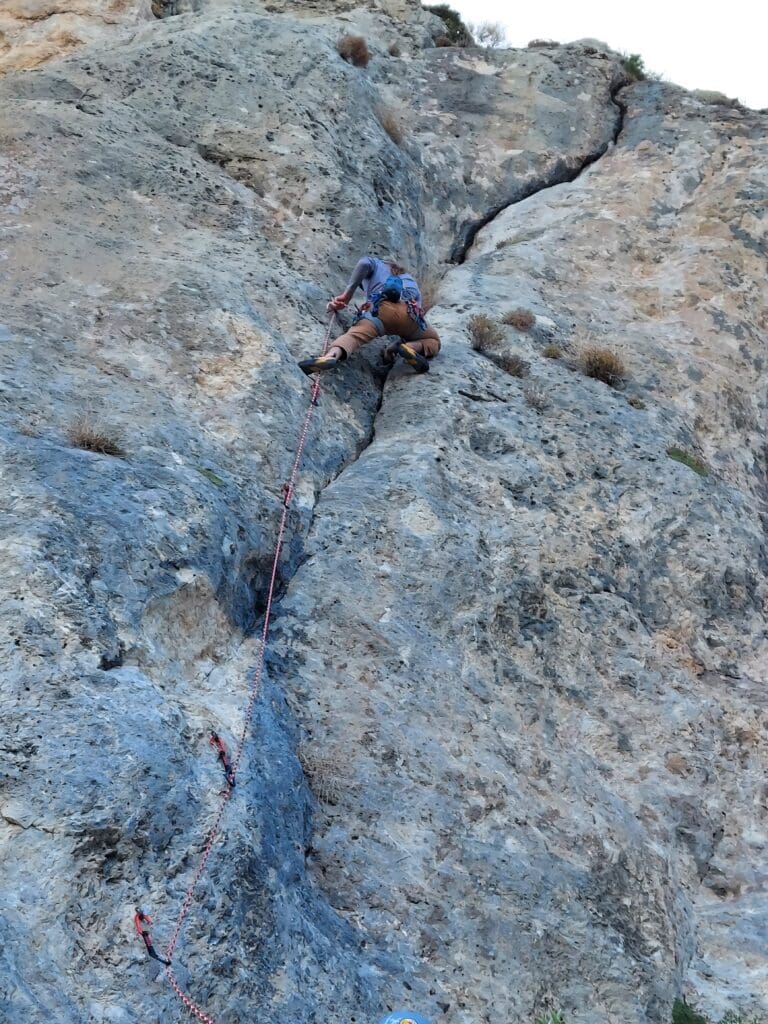Pick your Poison: Bouldering, Sport, and Traditional Climbing
Whether new to the world of climbing, or well versed in the vertical world, you’ve probably encountered a plethora of terms regarding the many disciplines of climbing. Ranging from bouldering, aid, sport, and trad to ice, there’s more ways to get on wall than you could imagine.
Here in the southwest, we primarily deal with the main three disciplines; bouldering, sport climbing, and traditional climbing. Each style offers a unique experience and set of challenges. Through this write-up, we’ll dive into each of these climbing styles and some recommendations for some of the best crags Flagstaff has to offer.
Bouldering
“Flagstaff is blessed with abundant, high-quality bouldering on several different types of stone. With almost every style available from monstrous pocketed limestone roofs, the technical granite like crimps of our local dacite, to the slippery slopey local “fontesque” sandstone, you are sure to find something that tickles your trigger.” -Mountain Project
Bouldering is the simplest and most accessible form of climbing. It involves scaling boulders or short rock faces without ropes or harnesses. Climbers rely on crash pads and spotters for safety. Bouldering is all about power, technique, and problem-solving. It’s a great way to build strength and hone your climbing skills.
Recommended Bouldering Spot: Climbers can get their fix at a plethora of spots within or just outside of town. Looking for a quick session without leaving city limits? Look no further than Buffalo Park. With an approach of less than 5 minutes from the city parking lot, you have access to a variety of problems set on basalt walls and boulders. Problems here range from V1 to V10. Just outside of town lies Priest Draw. A collection of limestone bluffs and looming roofs greet climbers with a dazzling array of problems.
Priest Draw’s famous limestone roof problems have attracted many a prolific climber over the last few decades. From friendly classics like “The Fin” (V1-2), to physical legends like “Carnivore Direct” (V9) there’s something for everyone. Problems range from V0 to V11.

Sport Climbing
Sport climbing falls in between bouldering and traditional climbing in terms of technical skill and equipment requirement. Climbers follow pre-placed bolts and anchors along a defined route, using a rope for protection in case of a fall. This style focuses on endurance, technique, and mental toughness.
Recommended Sport Climbing Spot: Considered the epicenter of climbing in Northern AZ, Flagstaff boasts access to countless quality crags. While there are too many worthwhile options to list here, perhaps the most recognizable, and accessible, is “The Pit” (Le Petit Verdon). Just 15 minutes south down Lake Mary Rd, The Pit was born of the sport climbing boom of the 80s and 90s. This limestone crag features a variety of routes to thrill the novice and challenge the seasoned dirtbag. From cruiser “Sunshine
Daydream” (5.7) to pump fests like “The Joker” (5.12c), there’s a challenge for all. Routes range from 5.7 to 5.13d.

Traditional Climbing
Traditional climbing, often referred to as “trad” climbing, is the most adventurous and technically demanding of the three styles. Climbers must place their own protection, like nuts and camming devices, into cracks and crevices in the rock. This style demands a deep understanding of climbing techniques and gear placement.
Recommended Traditional Climbing Spot: Much like the sport scene, Flagstaff offers a multitude of crags within a modest radius. While expanding outward of town up to an hour opens up mixed classics up sandstone spires in Sedona or handjams up the basalt pillars of the coveted Paradise forks of Williams, there’s plenty within a stone’s throw of Flagstaff. If rugged backcountry days in Pumphouse Wash or Westfork aren’t your thing, look no further than “The Overlook.” Just off the 89a on the way to Sedona, this crag offers a stunning view of Oak Creek Canyon and classic splitters. Predominately developed through the 70s, this crag offers some classic routes pioneered by some legendary first ascensionists. Routes range from 5.7 to 5.12 on gear.
Key Differences and Similarities
Equipment: Bouldering requires minimal gear, while sport climbing involves a rope, harness, belay and rappel device, and quickdraws. Traditional climbing necessitates a more extensive rack of gear, including nuts, cams, and slings.
Safety: Bouldering relies on spotters and crash pads. Sport climbing uses pre- placed bolts for protection. Traditional climbing relies on gear placements made by the climber.
Length and Difficulty: Bouldering routes are typically short, with high difficulty levels. Sport climbing offers a range of difficulties and longer routes. Traditional climbing routes can be long, and the difficulty varies widely.
Mentality: Bouldering emphasizes problem-solving, sport climbing demands endurance, and traditional climbing requires both mental and technical expertise. In Flagstaff, you have the opportunity to explore all these climbing styles, each with its own set of challenges and rewards. Whether you’re looking for a quick afternoon adventure or a multi-day climbing excursion, the area has something for every climbing enthusiast.
Climbing can be an amazing way to explore our world and the areas we love so much, but
is still a dangerous activity. Remember to always exercise caution and participate at your
own risk. Know your skill, your limits, and your comfort zone. So be safe, climb hard, and
enjoy everything this area has to offer!
See some of the climbing gear in stock at Peace Outfitters here.

